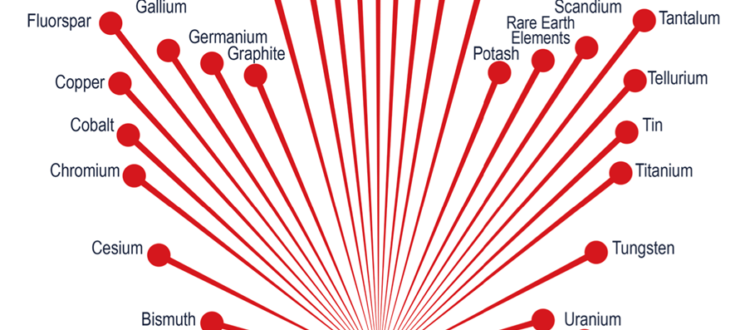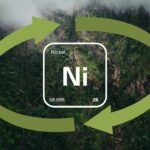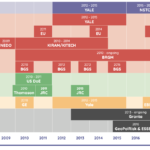Canada in the race for circularity and energy transition
IRTC network Member Marianna Ottoni shares her thoughts on Canada’s recently published Critical Minerals Strategy: In the race for circularity and energy transition – Canada unveils critical minerals value chain strategy with the promise to drive green and digital economy.
“There is no energy transition without critical minerals”, as stated by Jonathan Wilkinson, Canada’s Minister of Natural Resources in the recently released Canadian Critical Minerals Strategy [1]. On December 9, the Government published the final version of the Plan, considering ambitious measures to ensure the supply of critical materials to Canada and its partners by increasing the production and processing of the country’s 31 critical minerals.
So-called “critical minerals” or critical raw materials (CRM) are elements (e.g., lithium, cobalt, nickel, etc.) presented in various devices, including electronics and clean energy technologies, such as electric cars, solar panels and wind turbines. Their criticality is generally related to their geographic concentration in some particular regions of the planet and their economic and technological relevance, as these materials play a crucial role in the transition to a low-carbon economy. In the specific case of Canada, to be deemed “critical”, a mineral must either (I) be essential to Canada’s economic security and have a threatened supply, (II) be required for the transition to a low-carbon economy, or (III) be a sustainable source of highly strategic critical minerals for Canada’s partners and allies.
The Strategy aims at reducing the fragility of critical mineral supply nowadays often concentrated on China, the major world player in refining and processing many critical minerals. By putting Canada in the spotlight of CRM supply, the Plan collaborates as an opportunity for Canada to develop resilient value chains for critical minerals through innovation and job generation in CRM exploration, extraction, processing, downstream product manufacturing and recycling.
In simple lines, the Strategy considers value chain steps from critical mineral exploration to recycling, with financial incentives for CRM exploration and focus on project acceleration, especially in terms of making regulatory and licensing processes for mines more efficient. The Plan also addresses the need for new infrastructure in often remote regions of the country with critical mineral deposits, with a provision of up to $1.5 billion for infrastructure development. In total, nearly $2.95 billion in the 2022 federal budget was allocated to the Strategy. In addition, a new 30% tax credit was earmarked for critical minerals such as nickel, lithium, cobalt, graphite, copper, rare earth elements, vanadium and uranium. The Plan still includes goals to increase diversity in the workforce, including participation and partnership with indigenous communities.
The document shows the government’s commitment to continue the measures already initiated in previous years to take the lead in the critical minerals market, seeking to facilitate and accelerate the projects involved. However, a lack of details on tangible actions and deadlines to implement them were highlighted by specialists [2]. Another point of criticism on the Plan, in my perspective, is the still minor role of secondary sources of critical minerals. If we are considering advancing towards a real circular economy in the coming decades, clearer measures on secondary sourcing at the national level – such as the recovery of CRM from batteries, wind turbines and electronic waste – should be put in a more incisive way, as e.g. discussed in the run-up of the European Critical Raw Material Act [3]. Even though the Strategy establishes that a new innovation funding (not further specified in the document) will focus on processing and refining CRM from primary and secondary sources, bringing more attention to waste flows can be a possible solution to increase CRM supply, encourage collection and recycling rates of these wastes and, thus, promote a more circular, sustainable, low-carbon and resilient model for CRM value chains in Canada.
References:
- Canada, 2022. The Canadian Critical Minerals Strategy. From Exploration to Recycling: Powering the Green and Digital Economy for Canada and the World. https://www.canada.ca/content/dam/nrcan-rncan/site/critical-minerals/Critical-minerals-strategyDec09.pdf
- Aziz, S., 2022. Canada unveils new critical minerals strategy eyeing ‘generational opportunity’. Global News, December 9, 2022 11:08 am. https://globalnews.ca/news/9337577/canada-critical-minerals-strategy/
- European Commission, 2022. Critical Raw Materials Act: securing the new gas & oil at the heart of our economy. Blog of Commissioner Thierry Breton. https://ec.europa.eu/commission/presscorner/detail/en/STATEMENT_22_5523




